US Army Training and Drills Guide: Everything You Need to Know
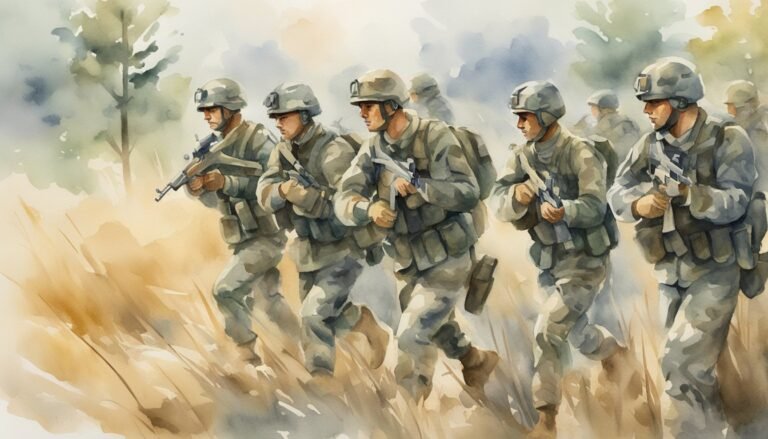
If you’re thinking about joining the U.S. Army or simply want to understand what it takes to train like a soldier, you’re in the right place. Army training is rigorous, focusing on physical readiness, discipline, and building strong leadership skills. From intense physical training to mastering drills and ceremonies, the journey is designed to turn recruits into capable and confident soldiers.
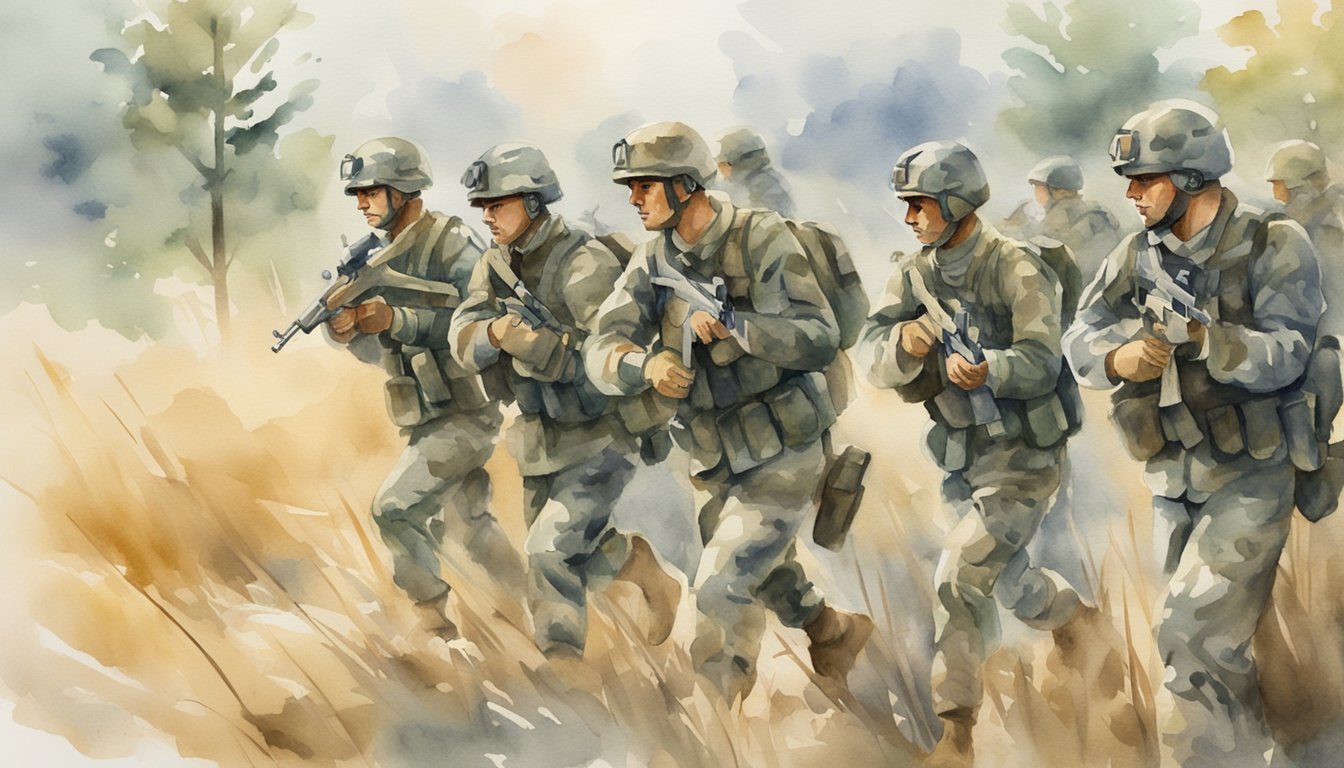
You’ll learn about the principles behind Army training and how these principles shape every aspect of a soldier’s life.
Whether it’s the mind-challenging drills, the focus on maintaining physical fitness, or the leadership principles taught, every element of the training process aims to develop well-rounded soldiers who can handle any situation.
As you read on, you’ll discover key practices that ensure unit coherence and effective teamwork among soldiers.
This guide will also provide practical tips for managing daily life in the Army, including insights into nutrition and wellness crucial for maintaining peak performance.
Key Takeaways
- Army training focuses on physical readiness, discipline, and leadership.
- Recruits undergo rigorous training to ensure unit coherence and effective teamwork.
- Practical tips on nutrition and wellness are essential for maintaining peak performance.
Understanding Army Training Principles
Army training principles focus on effective preparation and development.
Understanding these elements is crucial to improve performance and ensure readiness.
Key areas include the foundational aspects of FM 7-0 and the resources available through the Army Training Network (ATN).
FM 7-0 and the Army Training Network (ATN)
FM 7-0 is a central document for Army training.
It outlines the standards and procedures for training soldiers and leaders.
The manual explains the Training Management Cycle, a core framework for planning and executing training programs.
This document simplifies training concepts to help you understand how to lead and develop your unit.
The Army Training Network (ATN) is an online portal that supports FM 7-0.
ATN provides you with tools, resources, and guidance for training.
It includes training aids, templates, and examples to help implement effective training strategies.
Through ATN, you’ll find best practices and updates to improve your training sessions continuously.
Together, FM 7-0 and ATN form a comprehensive system to enhance your training efforts, ensuring that your unit meets Army standards and is always ready for any mission.
Recruit Training Overview
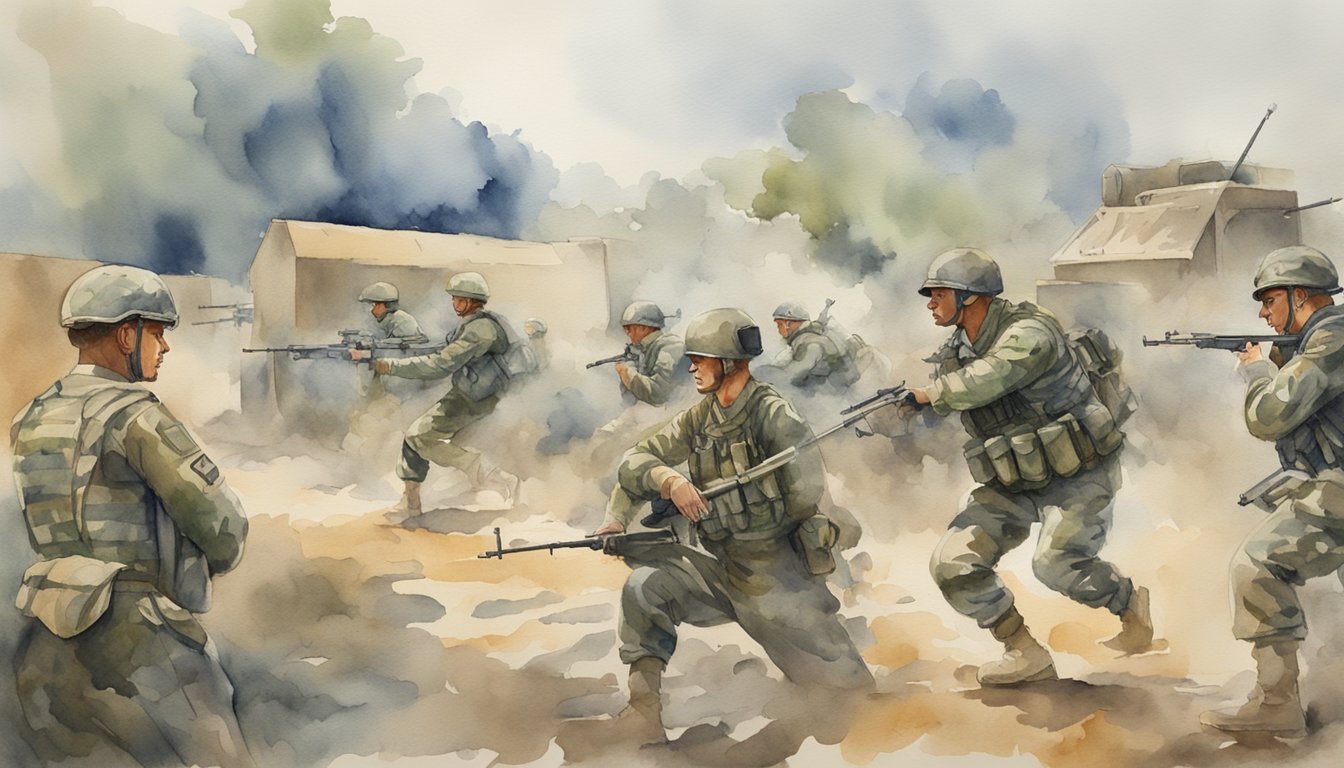
The U.S. Army’s recruit training is designed to turn civilians into soldiers.
It consists of two major phases: Basic Combat Training and Advanced Individual Training, each focusing on different skills and knowledge required for an Army career.
Basic Combat Training
Basic Combat Training (BCT), or “boot camp,” is where it all begins.
This phase lasts for about ten weeks and aims to build a strong foundation of military skills.
During BCT, you will learn how to handle weapons, understand military customs, engage in physical training, and develop discipline.
Expect long days filled with drills, exercises, and classroom instruction.
Key activities include marksmanship, physical fitness tests, and basic first aid.
You will also participate in field exercises like The Hammer, which combines various skills you’ve learned in a controlled environment.
The goal is to prepare you mentally and physically, making sure you can handle the demands of being a soldier.
More details can be found on the Army University’s Back to Basics page.
Advanced Individual Training
After BCT, you move on to Advanced Individual Training (AIT).
This phase varies in length depending on your Military Occupational Specialty (MOS).
AIT focuses on the technical and job-specific skills you’ll need in your Army career.
Training includes both classroom learning and hands-on practice with the equipment you’ll use in your field.
For example, if you are assigned to become a medic, you will receive medical training that’s more detailed than what you got in BCT.
AIT not only solidifies your soldiering skills but also makes you proficient in your chosen specialty, readying you for your first assignment.
More information can be found in the Basic Training Soldier Handbook.
Physical Readiness and Fitness Standards
Getting ready for military training involves meeting specific fitness and physical readiness standards.
These guide your strength, endurance, and overall fitness to ensure you’re combat-ready.
Army Physical Readiness Training
Army Physical Readiness Training (PRT) focuses on building a soldier’s overall fitness.
Exercises in PRT aim to develop your strength and endurance.
These activities include running, jumping, crawling, and other functional movements.
PRT is structured into three phases: initial conditioning, toughening, and sustaining.
- Initial Conditioning Phase: Prepares you for the demands of basic training.
- Toughening Phase: Enhances your physical capabilities through more intense exercises.
- Sustaining Phase: Aims to maintain and further improve your fitness levels.
With a mix of calisthenics, running, and drills, PRT ensures that you are prepared for varied physical demands.
The Army Combat Fitness Test
The Army Combat Fitness Test (ACFT) is designed to assess your physical fitness across several areas.
The ACFT includes six events:
- Three-Repetition Maximum Deadlift: Tests lower body strength.
- Standing Power Throw: Measures your explosive power.
- Hand-Release Push-Up: Checks your upper body endurance.
- Sprint-Drag-Carry: Evaluates speed, strength, and agility.
- Leg Tuck: Assesses core strength.
- Two-Mile Run: Tests your cardiovascular endurance.
Each event targets different muscle groups and physical capabilities.
You need to pass all these events to meet fitness standards.
The Army Combat Fitness Test Training Guide provides detailed instructions and tips to help you succeed in these tasks.
Training regularly and following the guidelines are key to excelling in the ACFT.
Role of Discipline and Leadership
In the U.S. Army, discipline and leadership are critical elements that support the effectiveness and success of military operations.
These principles ensure that soldiers perform their duties with professionalism and maintain high standards.
Army Values
Discipline in the Army is closely tied to core values such as honor, integrity, respect, and duty.
These values guide your actions and decisions, creating a framework for behavior that enhances teamwork and mission success.
When you internalize these values, you develop a sense of responsibility not just to yourself but to your unit.
Maintaining discipline involves strict adherence to rules and protocols.
This can mean everything from wearing the correct uniform to following orders precisely.
Discipline ensures that every soldier is fit, prepared, and able to respond effectively under stress.
It builds trust within your team, knowing that everyone is committed to the same standards.
Leadership Development
Leadership in the Army isn’t just about giving orders.
It’s about setting an example and earning respect through your actions.
Good leaders are disciplined themselves, showing that they adhere to the same rules and standards they expect from their soldiers.
This sets a strong example for others to follow.
The Army focuses on developing leadership skills at all ranks through continuous training.
Programs such as the Platoon Leader’s Guide to Training Management provide resources to help you understand and improve your leadership capabilities.
Effective leaders inspire their teams, ensuring motivation and high morale even under challenging conditions.
Drill and Ceremony Fundamentals
Understanding Drill and Ceremony procedures is key to fostering discipline and teamwork within the military.
The roles of drill sergeants and how ceremonies are conducted are crucial elements.
Drill Sergeants’ Role
Drill sergeants are the backbone of Army training.
They teach basic military skills and instill discipline.
You’ll find them leading physical training, teaching drill movements, and ensuring that recruits understand their duties.
Drill sergeants use their experience to turn civilians into disciplined soldiers.
They follow guidance from the Army Training Network, ensuring that training is consistent and effective.
By enforcing standards, they help soldiers develop habits that are essential in military life.
Drill sergeants also provide mentorship.
They guide recruits through challenges, helping them adapt to the demands of Army life.
Conducting Ceremonies
Military ceremonies are symbolic and structured.
They honor achievements, mark transitions, and instill pride.
The procedures for conducting ceremonies are detailed in manuals like TC 3-21.5.
Ceremonies follow strict guidelines.
This ensures that each event is dignified and respectful.
Preparation includes rehearsing movements, ensuring uniforms are immaculate, and coordinating with different units.
You’ll see ceremonies like parades, award presentations, and memorial services.
These events require precision and coordination.
Each step, from the command to the final salute, reflects the discipline and unity of the Army.
Military ceremonies are not just about following orders; they’re about showing respect and dedication to duty.
Effective Training Management
In the U.S. Army, effective training management is crucial to preparing soldiers for operational missions.
Key to this process are the Digital Training Management System (DTMS) and Combined Arms Training Strategies (CATS).
Digital Training Management System (DTMS)
The Digital Training Management System (DTMS) is an essential tool for tracking and managing training activities.
It helps you plan, schedule, and record all training events accurately.
Using DTMS, you can easily access training records and performance data.
This system ensures that training schedules are followed, helping leaders maintain accountability.
DTMS supports the Training Management Cycle, which includes planning, preparation, execution, and assessment phases.
By using DTMS, leaders at all levels can ensure their training programs are on track and up to standard.
Consistent updates and accessibility make DTMS user-friendly.
It integrates with other Army systems for streamlined data sharing, ensuring that training records are comprehensive and up-to-date.
The DTMS ensures that you have the tools to manage unit training effectively and meet mission requirements.
Combined Arms Training Strategies (CATS)
Combined Arms Training Strategies (CATS) are designed to integrate various combat arms, such as infantry, artillery, and armor, into cohesive training exercises.
CATS guide you in developing complex scenarios that reflect real-world operations.
These strategies focus on combined arms operations, making sure each branch works together under realistic conditions.
They provide structured templates and guidelines to improve training quality and coordination among different units.
With CATS, you can create detailed training plans that enhance battlefield readiness.
You get to use these strategies to develop your soldiers’ ability to operate in diverse and challenging environments.
This comprehensive approach prepares units for the complexities of modern warfare, ensuring they are ready for any operational challenge.
Effective use of CATS enhances your unit’s performance, improving their ability to succeed in joint operations and combined arms engagements.
These strategies empower leaders to conduct seamless, integrated training exercises, building stronger, more versatile teams.
Developing Soldier Physical Capabilities
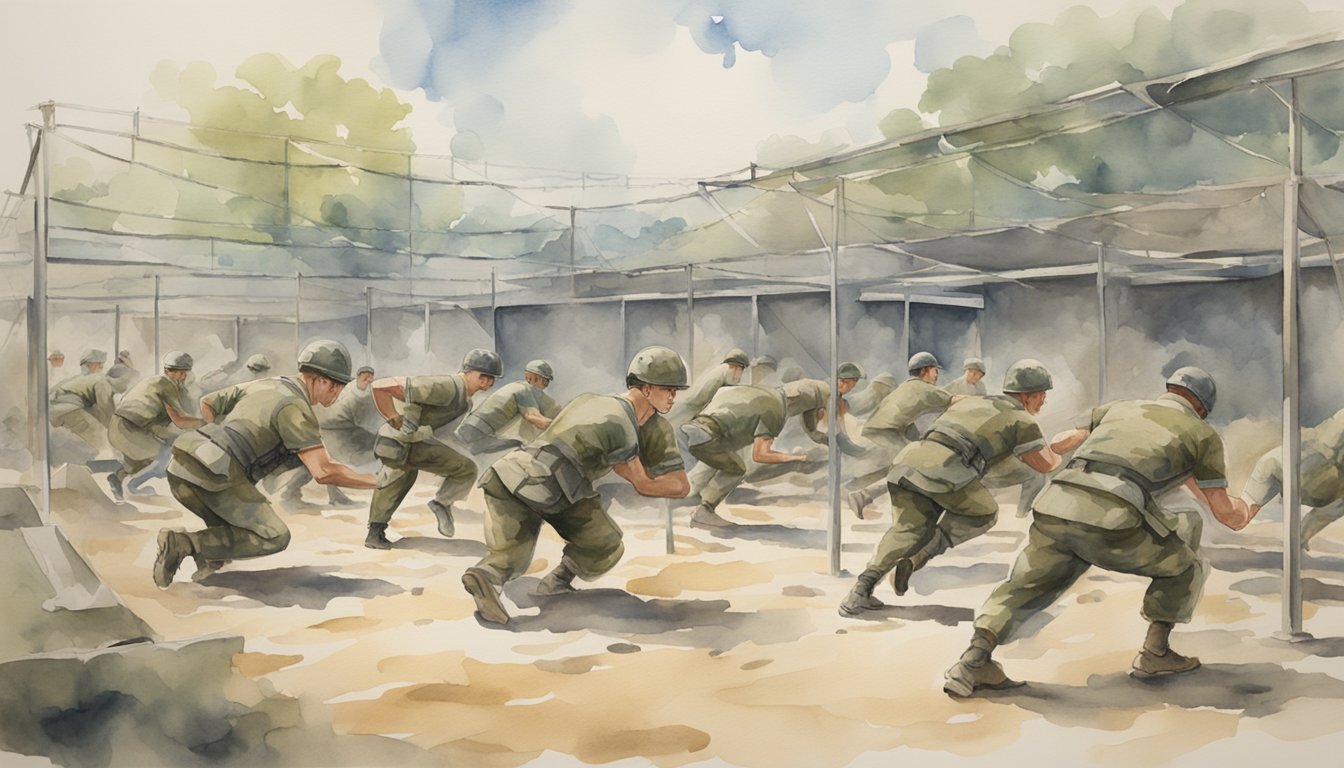
To build a well-rounded soldier, you need to focus on both strength and conditioning as well as cardiovascular health.
Each of these areas plays a vital role in ensuring you can meet the physical demands of military service.
Strength and Conditioning
Strength training is key for any soldier.
It helps improve your muscles, especially in the shoulders and chest.
Common exercises include push-ups, sit-ups, and weightlifting.
These exercises target multiple muscle groups, enhancing your ability to carry heavy gear and perform demanding tasks.
Bodyweight exercises like pull-ups and dips are effective because they can be done anywhere.
Weightlifting is also crucial.
Should you have access to a gym, squats and deadlifts are ideal for building lower body strength.
Strong muscles protect you from injuries and improve overall physical performance.
Including interval training in your regimen can also boost strength and conditioning.
This can involve short bursts of intense exercise followed by periods of rest.
Such workouts help in building endurance while also enhancing muscle strength.
Mixing up your routine keeps things interesting and ensures comprehensive muscle development.
Cardiovascular Health
Cardiovascular endurance is essential for long marches and sustained physical activity.
Running is the most basic, yet effective, way to improve heart and lung capacity.
Try different runs like sprints, long distances, and interval training.
Swimming is an excellent cardio workout, using multiple muscle groups while being low impact.
If you have access to swimming facilities, spending time in the pool can complement your running routine.
Cycling is another option.
It provides a good cardiovascular workout while being easier on the joints compared to running.
Rucking, or marching with a weighted pack, is a practical way to combine cardio with strength training.
It simulates real-life military tasks, preparing you for the physical challenges you might face in the field.
The combination of these various cardio activities helps in building a robust cardiovascular system, essential for overall fitness in the military.
Your physical activities should be diverse to cover all aspects of your physical capabilities.
Unit Coherence and Teamwork
In the military, unit coherence and teamwork are crucial for successful missions.
Effective unit training management and practicing battle drills and team tactics can help enhance these essential components.
Unit Training Management
Unit training management is a process that ensures all members are on the same page.
You need to set clear goals and standards for training.
These offer a roadmap for what is expected.
Regular assessments are key.
They help identify areas where your unit might need improvement.
For instance, if your team struggles with communication, you can develop targeted drills to address this.
Training must be realistic and relevant.
Scenarios should mimic actual situations you might face.
This helps in preparing for real-life operations.
Consistency in training builds muscle memory.
Your unit must practice regularly to maintain readiness and efficiency.
Having a solid training schedule ensures everyone knows what’s expected and stays on track.
Battle Drills and Team Tactics
Battle drills are essential for quick, reflexive actions during combat.
These drills should be practiced until they become second nature to you and your unit.
Common drills include reacting to enemy contact or ambushes.
Team tactics involve coordination and strategic planning.
You must understand each member’s role and how they contribute to the mission.
Clear roles prevent confusion during high-stress situations.
Using hand signals, verbal commands, and other communication methods is vital.
This ensures everyone knows the plan and their specific tasks.
Frequent rehearsals of different situations can prepare your team.
Whether it’s room clearing or convoy operations, rehearsals boost confidence and effectiveness.
This is crucial for building trust and ensuring your unit acts as a cohesive, efficient team.
Practical Considerations for Soldier Life
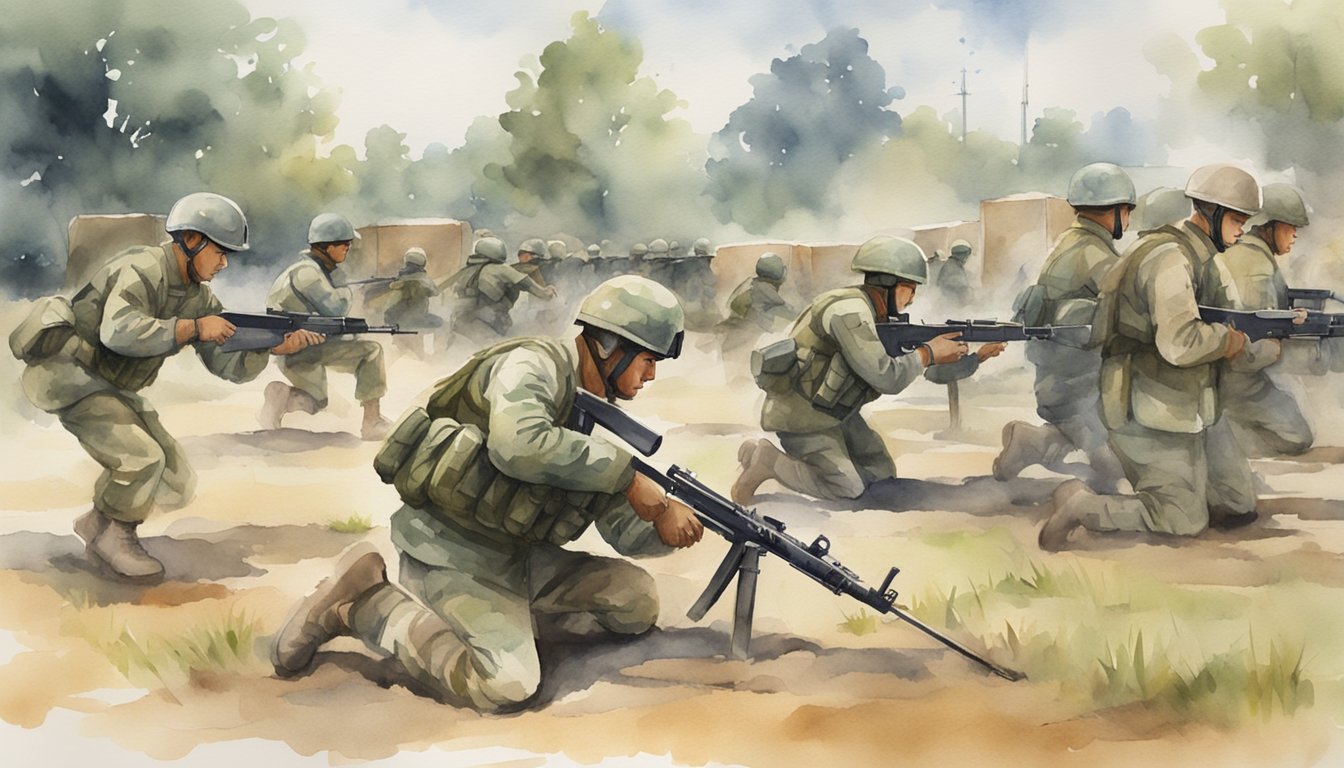
When you join the United States Army, it’s important to understand some key aspects that will affect your daily life.
Two of the most critical considerations are your pay and allowances, as well as maintaining personal appearance and standards.
Pay and Allowances
Your pay and allowances are vital parts of your life in the Army.
Basic pay depends on your rank and years of service.
For example, a Private First Class (E-3) with two years of service earns more than a newly enlisted Private (E-1).
Additionally, you receive various allowances to help cover living expenses.
You might get a Basic Allowance for Housing (BAH) if you live off-base.
This helps with rent or mortgage costs.
There’s also a Basic Allowance for Subsistence (BAS) to cover your meals.
Sometimes, you might get extra pay for specific duties, like hazardous duty or deployment.
Keep track of your pay and allowances through your Leave and Earnings Statement (LES), which details your earnings and deductions monthly.
Being informed ensures you can budget effectively and plan for future expenses.
Personal Appearance and Standards
Maintaining a high standard of personal appearance is crucial in the Army.
This includes keeping your uniform neat and wearing it correctly.
Each piece of your uniform has a specific place and way it should be worn.
Regular maintenance of your uniform, such as ironing and polishing your boots, is essential.
Haircuts are also an integral part of your personal appearance.
Men must keep their hair short and well-groomed, usually in a fade or buzz cut.
Women must keep their hair neat and up if it exceeds a certain length.
Adhering to these standards demonstrates discipline and respect, both for yourself and the Army.
It’s more than just looking good; it’s about readiness and representing the values of the United States Army.
Life Beyond Basic Training
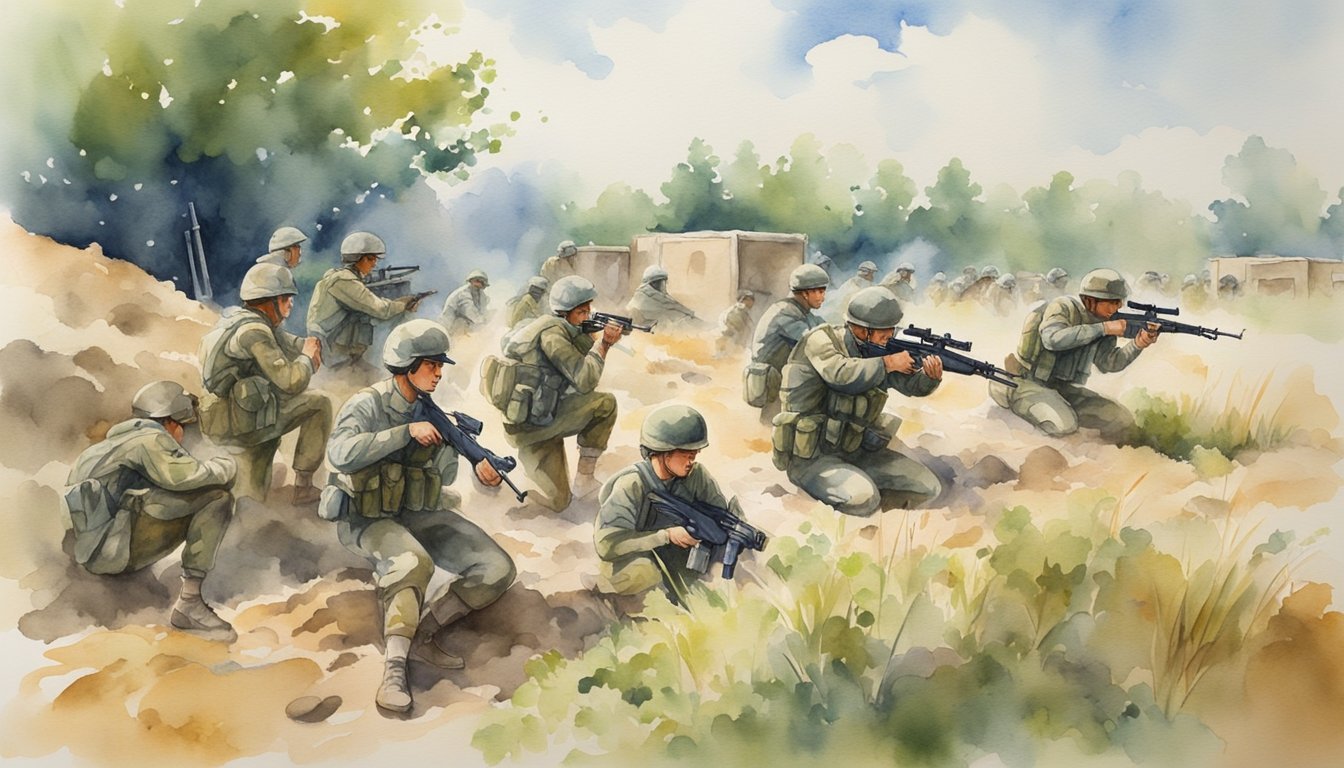
After completing Basic Training, soldiers embark on a journey filled with various opportunities.
They can advance within the Army or transition to civilian life with skills and experiences beneficial both in and outside of the military.
Army Career Progression
Once Basic Training is complete, you can move on to Advanced Individual Training (AIT).
At AIT, you’ll learn the specialized skills needed for your Military Occupational Specialty (MOS).
Your career progression can include promotions and advanced training programs.
These opportunities can lead to leadership roles and specialized units.
For instance, Rangers and Special Forces offer additional training and growth options.
The Army also offers educational benefits.
Programs like the GI Bill help you pursue further education while serving or after your service ends.
Transitioning to Civilian Life
When the time comes to leave the Army, transitioning to civilian life is a significant step.
The skills you’ve learned, like discipline and teamwork, will be valuable assets in the civilian workforce.
The Army provides support through transition assistance programs. Programs like the Soldier for Life – Transition Assistance Program (SFL-TAP) offer resume writing help, job search assistance, and career counseling.
Veterans often find employment in various fields such as security, management, or technical roles.
The leadership skills and experience gained in the Army are highly valued in the civilian job market.
Nutrition and Wellness for Soldiers
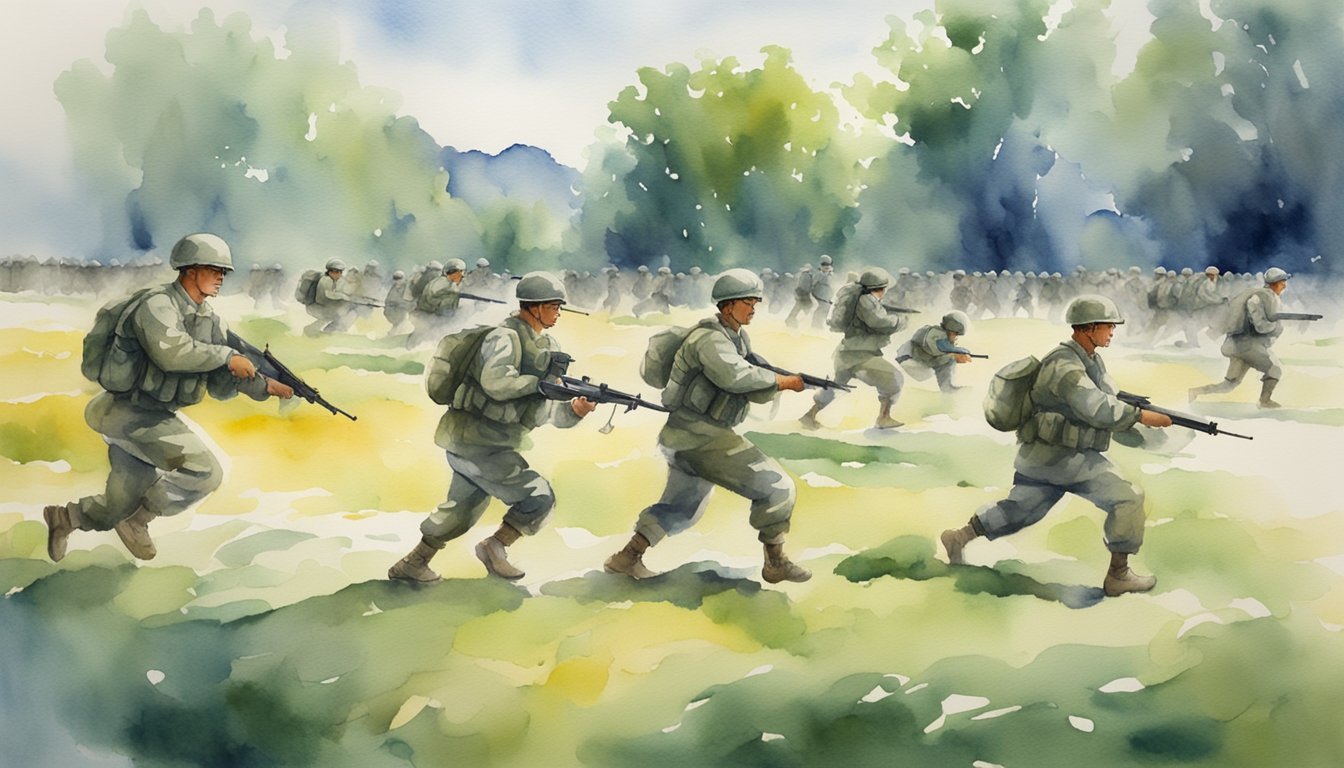
Eating right is key to achieving top-notch endurance and overall wellness.
You need the right fuel to perform your best during drills and intense training sessions.
Balanced Diet
A balanced diet is important.
Focus on:
- Proteins: Lean meats, beans, and nuts.
- Carbohydrates: Whole grains, fruits, and veggies.
- Fats: Healthy oils like olive oil and avocado.
Hydration
Staying hydrated is essential.
Drink plenty of water throughout the day.
Avoid too many sugary drinks.
If you’re training hard, consider sports drinks to replenish electrolytes.
Meal Timing
Try to eat at regular intervals.
Don’t skip meals.
Have a small snack, like nuts or fruit, before workouts to boost your energy.
After training, eat a protein-rich meal to help with recovery.
Sample Meal Plan
| Meal | Foods |
|---|---|
| Breakfast | Oatmeal, eggs, fruit |
| Lunch | Grilled chicken, quinoa, salad |
| Dinner | Fish, sweet potatoes, veggies |
| Snacks | Yogurt, nuts, smoothie |
Supplements
If you feel your diet isn’t enough, supplements like protein powders or multivitamins may help.
Always check with medical personnel before starting any new supplements.
Sleep and Recovery
Getting enough sleep is also important.
Your body needs time to repair and build muscle after tough workouts.
Aim for 7-9 hours of sleep each night.
For detailed guidance, check out the Warfighter Nutrition Guide.
Your nutrition directly impacts your performance, so take it seriously.
Eating right is not just about feeling good; it’s about performing at your best during every training exercise and mission.
Frequently Asked Questions
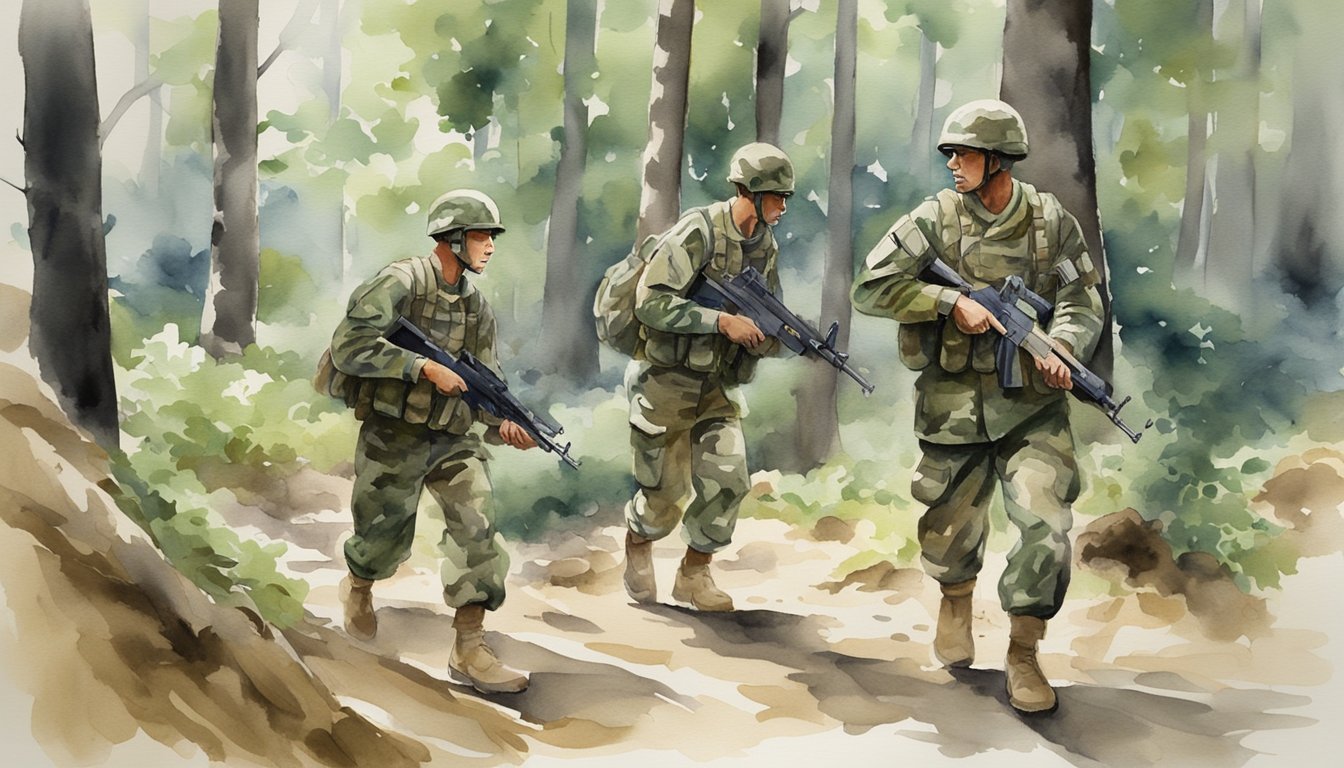
Learn about the structure and various elements of Army basic training, including duration, key activities, and weekly routines.
How long does Army basic training last?
Army basic training usually lasts for 10 weeks.
This intensive period prepares you for the physical and mental demands of being a Soldier.
What’s included in the 16-week military training program?
The 16-week military training program covers basic training and additional specialized skills.
You’ll train in weapon handling, tactical drills, and survival skills to be fully prepared for your duties.
Can you give me a sample Army basic training workout routine?
Expect exercises like push-ups, sit-ups, running, and obstacle courses.
Your daily routine will include a mix of cardio, strength training, and endurance exercises to build your physical fitness.
What’s a typical week like in Army PT?
A typical week in Army Physical Training (PT) includes a mix of cardio workouts, strength training, and team-building exercises.
You’ll start early in the morning and train in various physical activities throughout the week to build strength and stamina.
What are the phases of Army training?
Army training is divided into three phases: Red, White, and Blue.
Each phase focusses on different skills and knowledge.
You’ll go through weapons training, field exercises, and finally, readiness drills before graduation Army Basic Training Phases.
What are the main principles guiding Army training?
The main principles guiding Army training include discipline, teamwork, leadership, and resilience.
These principles ensure that you are prepared for the challenges of military service.
Training aims to develop well-rounded Soldiers who can adapt and excel in various situations.






